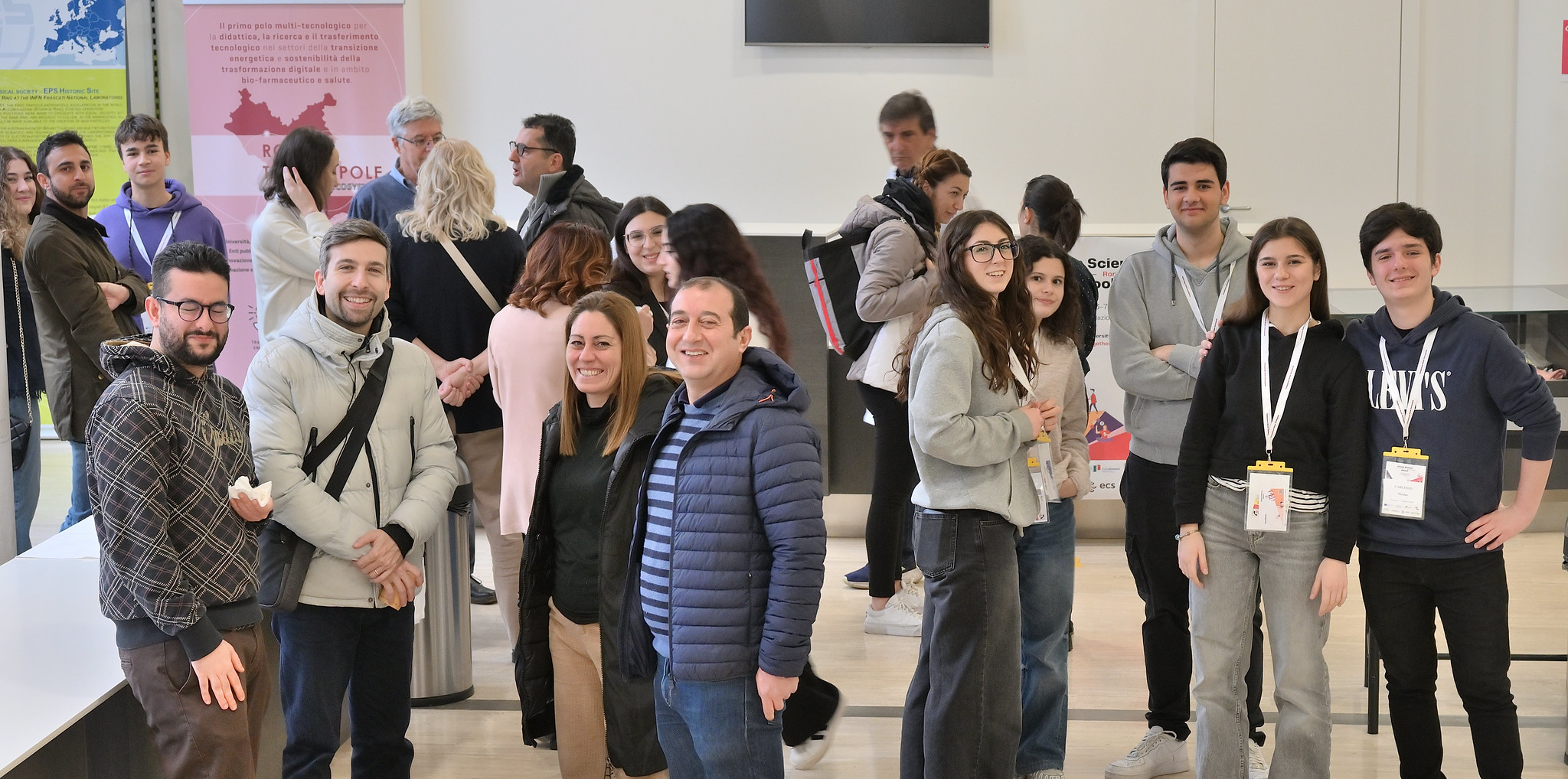
The Rome Technopole School in Citizen Science: Impressions from participants
Simona Cerrato
April 9, 2025, 8:45 a.m.
As it should always be the case, human aspects, emotions and personal commitment are key for a truly positive learning experience. here are some of the immediate impressions from those who participated, in various roles, in the Rome Technopole School in Citizen Science.
Marco Raoul Marini (researcher)
Teaching at Rome Technopole Citizen Science course was profoundly moving. Watching students pour their hearts into XR interfaces that reimagined human connection brought tears of pride: they designed a cooking assistant using the headset as a supporting device to learn how to prepare recipes. Another crafted holographic surgeon guides to guide the hands of the neophyte during critical procedures. They also worked on an industrial production chain operator interface prototype where AR provides suggestions and alerts. Their passion wasn’t just technical — it was human. They didn’t just solve problems; they wowed empathy into UI design, proving that tech’s soul lies in serving humanity’s quietest struggles and citizens' needs. What a privilege to witness hope take shape in their hands.
Monica Andriani (insegnante)
I arrived in Frascati convinced I was attending a training conference where I would spend five days listening to lectures and various presentations. I quickly realized I had made a big mistake, but to my great pleasure, I discovered that I would be doing something else during those days. Everything was surprising, fun, exciting, and engaging! From the project presentations to the assignment of people to individual groups, and then to the actual activity. I was assigned to the oral health group: aaargh, I hate my dentist, every visit feels like torture! Instead, I had fun, I learned to overcome my trauma towards dental visits, I worked in a team, a rarity for me, and I tried to speak English.
Aleksandra Lazevski (university student)
Participating in the Citizen Science School in Rome was a truly transformative experience that deepened my belief in the power of collaboration between scientists and citizens. One of the most significant impressions was realizing that when you bring together individuals with diverse backgrounds but a shared passion, you can achieve concrete and incredible results in a very short time — and that’s exactly what we did with our project on antibiotic resistance. Over the course of five dynamic days, I gained invaluable insights into citizen science, teamwork, constructive criticism, and design thinking. Most importantly, I saw firsthand what we were told at the very beginning — that everyone has valuable knowledge to share. This journey strengthened my commitment to inclusive, community-driven science as a path to sustainable solutions.
Salvatrice Terranova (teacher)
The Rome Technopole School in Citizen Science brought citizen science into the world of schools and universities, involving teachers, students, and university students in a single project. It allowed not only to understand citizen science as an opportunity for people to have an active role in science without passively experiencing its effects, but also a fruitful collaboration between individuals of different ages and backgrounds.
The research areas proposed by Rome Technopole were quite diverse and generated an intense in-depth activity, on many possible aspects related to the topic, with the contribution of each member of the group, with the support of experts, and with constructive comparison between the different groups. This was definitely one of the strengths of the Citizen Science School.
In the research project I participated in, Designing Intuitive User Interfaces for VR/AR/MR Environments, my group members and I became co-producers of possible, certainly futuristic, interfaces for the latest generation headsets.
Initially, I found myself struggling because I had never used a headset and thought the only possible use was for gaming or in a museum; compared to the other members of the group, secondary school students, I was behind, a strange feeling!
But when I understood the purpose of the project and the logic behind it, which was to become designers together to make the headset a tool usable in everyday life, useful, accessible, and functional, I got excited. I learned that in the design, every choice, from the position of the icon on the screen, to the shape, color, duration, and opening and closing methods, was fundamental. For each use scenario, each of our options had to be suitable for every proto-person, not only for the young technology enthusiast but also for mothers and fathers, grandparents, the able-bodied and people with disabilities, and for this, every tiny detail needed to be considered.
The working method was crucial, namely the initial division of the group into two subgroups for a first draft of the project. From the subsequent comparison and sharing of the two project drafts, a single final product, both on paper and simulated, emerged, which carried within it the different points of view.
After imagining these interfaces, we tried to understand if and how a citizen science project could be useful to develop them and how to involve and motivate citizens to contribute and provide feedback.
I believe that my participation in the Rome Technopole School in Citizen Science was a very formative experience, for the serene management of activities, for the novelty in the way of collaborating, for the feeling of being involved in a common and shared project. The equal collaboration with the students allowed me to see them express themselves naturally and enthusiastically, without the fear of being judged and without the anxiety of their performance being evaluated. I returned with the idea of how to transfer this way of working into the school world to bring out the best that students can give.